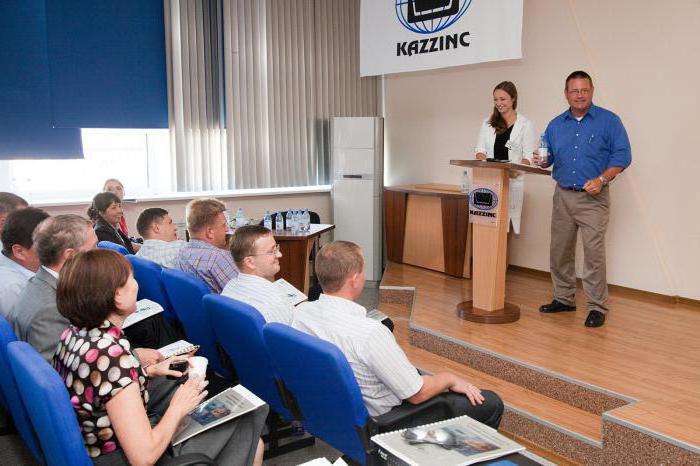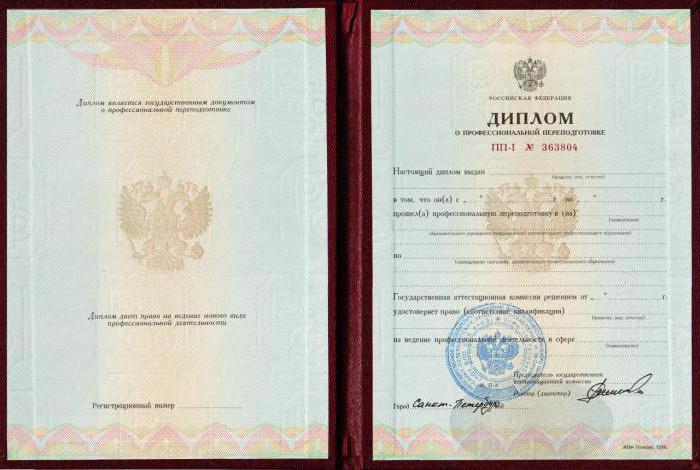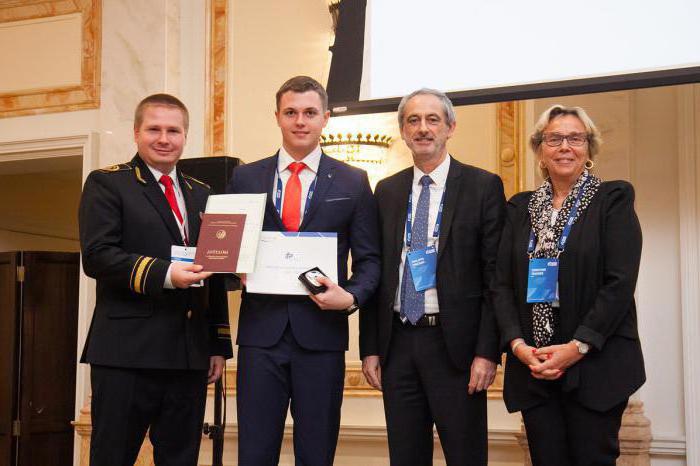Let's immediately decide on the topic of today's article: what is professional retraining? This term refers to the process of obtaining additional competencies of either a new profession by those who have an education (secondary special or higher), or senior students. The retraining system was developed by the RF Ministry of Education and Science as an alternative to a second higher education.
Who might need it?
The list of population categories for which this concept is relevant is very, very extensive. Remember the young mothers who went out of the decree and lost their professional skills or lost their jobs for one reason or another. About students completing their studies and unsure of the possibilities of future employment. About those who have unsuccessfully chosen a profession and now bite their elbows in an unloved job. About employers who are willing to pay for staff training and have at their disposal reliable and highly qualified personnel. About young pensioners with an active character who want not to stay at home, but to work to the best of their ability and be useful. About those whose dreams of career growth are limited by a lack of professional competence. The output for all these people may be additional training in an adjacent or alternative specialty.

What is professional retraining and what does it give
It leads to the formation of new competencies and the acquisition of special knowledge. The ultimate goal is the acquisition of additional qualifications and new professional skills in a particular field. Participants in the labor market who have received such an education acquire new opportunities. That is why many employers are quite serious about professional retraining and consider it as a reasonable alternative to a second higher education.
A diploma obtained at the end of the training course will allow its holder to work legally in a field adjacent to the main activity. If we take into account the constant growth of competition in the labor market, then obtaining additional education can be considered one of the most powerful tools that increase everyone's chances for a successful career.
One of the most important points in this case is the right choice of a second profession, which always depends on the goals and personal characteristics of the student.
You can use this form of training to anyone who has an education (secondary, vocational or higher). At the same time, both higher and secondary specialized education can be incomplete.
All training programs for retraining developed by the Ministry of Education of Russia. They are available in various forms - full-time, part-time, evening, distance. The availability of a particular direction depends on the policy adopted in a particular educational institution.
For whom is the retraining course particularly relevant? First of all, we should mention people working in the wrong profession, which is indicated in the diploma. A huge army of people wishing to get another profession additionally adjoins here. Of course, senior students at the threshold of employment fall into this category.
What kind of she is
1. If an employee wishes to improve his own professional skills, he is advised to undergo professional retraining as part of his own specialization. Knowledge will be improved and supplemented, the competence of a specialist will increase.For this option, there are many training programs for retraining, developed for specific specialties and taking into account all qualification requirements.
In this case, it is necessary that higher or secondary vocational education be completed. The duration of training in this case is about 6 months. After completing his studies with successful certification, the student will receive a diploma of professional retraining of the established form.

2. When a specialist with secondary vocational or higher education, seeks to obtain a different qualification, he can choose for himself additional professional retraining, which to a certain extent can be considered an alternative to a second higher education. What distinguishes it from the previous one? If we are talking about a student who already has several completed disciplines, the results can be re-read. However, the process of obtaining additional qualifications should not be confused with a second higher education, we will talk more about this later in our article.
In this option, training lasts about 2 years and ends with the delivery of an approved diploma.
Separately, mention should be made of programs related to the business sphere. They are designed for top management specialists, and such programs (MBAs) are quite serious and full-fledged training of highly qualified personnel in the economic sphere.
After January 1, 2013, the form of the diploma, which is issued based on the results of training, has changed. Now a new form of established pattern is applied. This happened due to the lack of uniform federal requirements. However, state diplomas received before 2013 have the same strength as current ones.
Why do people go to get additional education?
We all know people who can be called good specialists and workers who love their profession. But their income level leaves much to be desired. They often resort to "pumping" skills through professional retraining. After all, this is a real chance of radical changes in the profession!
With the acquisition of a new qualification, the field of human activity is expanding significantly. What is vocational retraining in a "related" field? A related profession is obtained in various fields by combining. It should be close to the main activity. For example, a turner can additionally retrain as a locksmith, a hairdresser as a makeup artist, a nurse can master massage skills, and a driver can become a freight forwarder along the way. A general practitioner, having undergone additional retraining, can qualify as a pediatrician and work in that capacity. This expansion of our own competencies will help in the event of a crisis to preserve a precious workplace.

Before deciding which profession to choose additionally, you should analyze the situation on the labor market and recall your own aspirations and preferences that have attitude to current activities. For example, it’s easy for an accountant to retrain as an auditor, tax consultant, economist, or financial manager. A teacher, having passed professional retraining in education, will join the staff of the rehabilitation center without any problems or will be able to work in a private kindergarten, guardianship authorities or be engaged in tutoring. Providing a lawyer with consulting services, working as a realtor or HR manager.
Sometimes it happens that sooner or later in the course of work a person understands - initially the profession was chosen imprudently. An employee cannot remain, for example, in pedagogy or medicine because of a shaky nervous system or begins to hate bookkeeping, as he is tired of numbers and sedentary work. And in this case, professional retraining of specialists can be an effective way to successfully change your life.
How to choose a second profession
The second profession should be chosen solely in accordance with their own interests and natural inclinations. For example, to go to work in the economic sphere is best for those who, since childhood, have been at odds with mathematics and are well versed in numbers. Communicative people with a developed artistic taste and aesthetic thinking are shown work, for example, in beauty salons, as a designer, hairdresser or artist-decorator. Love for one's own business is the strongest motivation and the best incentive for professional growth.
If it is not possible to determine the desired field of activity or there are no specific creative abilities, you should choose one of the so-called neutral professions for which narrowly focused skills and knowledge are usually not required. An example is a cashier, secretary, administrator or cosmetologist.
Those who can’t make a choice can try to start with professions that do not require long training. For example, try to become a telephone operator, call center operator, orderly or driver. If in the process of training or work you realize that this is not yours, the loss of time and money for training will not be so great and you will be able to quickly return to the search for your field.

Profession Change Stages
Now that you have learned what professional retraining is and plan to put the information into practice, we’ll look at a few basic steps that have to be taken by the person who takes this important decision.
Step 1. First of all, you should decide on the training center and from the programs offered by it, choose what most suits your goals and plans. This step is quite serious. The center you have chosen should be checked for permits - licenses, accreditation, etc. Remember that the documentation should contain a permit for such activities (we are now talking about training courses for professional retraining).
Be sure to familiarize yourself with the documents on the education of those who teach courses, as well as their practical experience in a particular subject. Indeed, the quality of your training directly depends on this. If the center has its own copyrighted training courses and teaching aids, this is a good sign - proof of the serious attitude of the institution to the educational process. All programs offered should be analyzed and the one that suits you best.
Step 2. Now it's time to send the application. You can do this in many ways. The choice depends on the form in which you intend to study. If the educational company is located in your city and you plan to study full-time, it is most convenient to apply for a personal visit to the office. In the case of professional retraining remotely, an application can be submitted through the site. Most often, for these purposes, they provide a separate form in which you fill out all the necessary fields and send them by pressing a button.

Step 3. After considering the application by the selection committee or the manager of the company that conducts the training, you can expect a response to the email indicated in it. The answer, as a rule, contains detailed instructions with a list of all the documents necessary for your receipt. Their list most often differs little in different educational institutions.
It almost always consists of a diploma of higher or secondary special education along with an insert, copies of the TIN and SNILS, a couple of photographs in the “document” format and photocopies of the passport (first page and registration sheet). Documents can be sent either by regular mail or electronically, or their scans are submitted to the site through a special online form. There is also an option with courier delivery.It is most convenient to send documentation by scanning in JPEG, BMP or GIF format and “sending” it to the site immediately, accompanied by a short explanatory letter.
Go directly to the process
Step 4. Now you should pay the cost of the selected program. To do this, the bank details will be sent to you in the contract or separately. Sometimes an educational organization carefully supplies students with ready-made receipts, in which it remains only to enter their own data. With such a receipt, you go to any bank and deposit the necessary amount. In many training centers, it is possible to pay for professional retraining courses through a bank card, electronic wallet or terminal.
Step 5. That's all, you can start learning. First of all, you should familiarize yourself with the training schedule, which will be mandatory provided to you as part of a set of training materials. At the beginning of the educational process, it is advisable to strictly adhere to the schedule. If you have any problems or circumstances of force majeure nature, immediately contact the curator, who will tell you what to do in this case. It is most convenient to start with the easy-to-learn course modules in order to leave the main time for the most difficult sections.

Where to go for additional education?
There are a lot of educational institutions offering similar services. Some of them have long and reliably established themselves in the educational services market. It is on such institutions that one should pay attention in the first place.
For example, we can talk about the Moscow training center "Profacademia", you can study there either in person or remotely. The estimated cost of professional retraining of more than 250 hours is about 17,000 rubles, from 500 hours - about 24,000 rubles. Deposits are possible by installments. Final testing is carried out, then students perform qualification thesis work. A diploma issued allows you to work in a full-time profession.
The training center "Specialist" at MSTU is over 25 years old. This company can boast of the availability of conditions for the highest quality training - many (about 80) classrooms, a large number (about 250) highly qualified teachers, a huge selection of courses (over 1000). The advantages of training in this center are a stable schedule drawn up for the year ahead, professional consultations before the start of training, the possibility of preliminary testing, a combination of different forms of training, the principle of modular construction of the course, which is very convenient for each student taking into account his individual characteristics. When paying, promotions and discounts are possible.
About the Moscow Institute of Open Education (IIOO) has been known since 1938. It was then that it was founded under the name of the Moscow City Institute of Advanced Teachers. Currently, MIOO is one of the most modern educational institutions that provide high-quality training services for continuing education and professional retraining in many programs and areas. All details in each case are most easily found on the website of the selected training center.
Note to teachers
If you are a teacher and you are interested in the issue of professional retraining of educators, then you should choose among the institutions that specialize in this field. There are, of course, a lot of them. In this case, we recommend that you use the services provided by the Federal State Autonomous Educational Institution that implements continuing education programs and is known as the Academy for Continuing Education and Professional Retraining of Education Workers.
In 2017, 90 years have passed since the founding of this educational institution, in connection with which we can confidently talk about sustainability and reliability, leading positions in the field of additional pedagogical vocational education. You will receive all the necessary information by going to the official website of the academy.

What is the difference?
Let us now look at the main differences that exist between professional retraining and a second higher education. There are four of them:
1. In our case, we are talking about reduced training periods. After all, another higher education will require you to have full training for a three-, four-year period, depending on the form and specialty chosen. Not everyone can afford to spend so much time. It is in this case that one should turn to the option of advanced training and professional retraining.
Its term may not be less than 250 academic hours. Different types of it suggest the number of hours from 500 or from 1000. Such a sharp contrast in terms of training is explained by the absence of volumetric theoretical arrays that do not bear practical application in the case of professional retraining, which reduces the time required for studies. You are given only proven practical knowledge.
2. The same significant differences in the cost of training. If the possibilities of a person who received a diploma of professional retraining are no different from the possibilities of someone who has acquired a university crust, then the price of the issue is several times (usually 2-3) lower.
3. The presence of entrance exams. Without them, you will not be accepted to college. In one form or another (written, oral, testing, personal answer), an exam will be required. This sometimes becomes an obstacle for unsure applicants. In retraining courses for entrance exams, it is not assumed that at times expands the possibilities of choosing the right program.
4. The option we offer allows you to conduct the development of a new profession in the most comfortable conditions with the preparation of an individual schedule, selected for your specific needs. You do not depend on a rigorous curriculum adopted at universities, and a regulated curriculum.
In conclusion, it should be mentioned that vocational training and retraining should be called an opportunity with minimal financial and time costs to increase one's own working competence and make a decisive breakthrough in achieving the desired career in the chosen field.